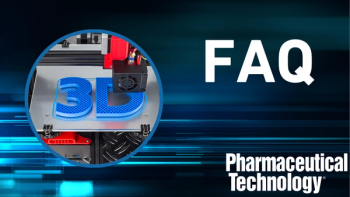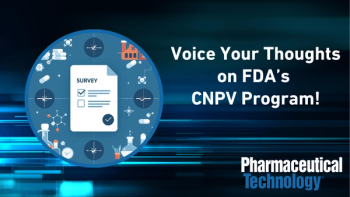
Equipment and Processing Report
- Equipment and Processing Report-02-18-2015
- Issue 2
Choosing a Contract Packager
Careful selection of a contract packager should include interviews, surveys, and on-site visits.
It’s not always feasible to package products in-house. A contract packager may be the answer to moving product out the door for low-volume runs, when specialized designs such as display packaging or single-dose, private-label pouches are needed, or in situations where capacity is constrained, equipment is unavailable, or specialized equipment must be acquired.
“Contract packagers tend to be entrepreneurial organizations and specialists in what they do,” explained Chris Nutley, president of the Contract Packaging Association (CPA), during a webinar on Jan. 20, 2015 (1). For example, a contract packager may be set up to run parenteral products, but not solid-dosage forms or vice versa. A specialist in solid-dosage forms may not be equipped to handle both blister packaging and bottle formats.
Contract packaging services also may be offered by vertically integrated CDMOs such as Aesica, which recently received continuing FDA approval of its bulk manufacture and packaging sites in Germany. “These approvals will allow Aesica to substantially grow its contract manufacturing and packaging services for supply of pharmaceutical products to the US market,” said Dr. Werner Schick, Aesica’s general manager, Germany, in a statement (2).
Hiring a contract packager for projects such as test runs or pilot runs “allows you to keep your focus on your core competency,” John Mazelin, executive director of the CPA, told the webinar audience. “It also increases flexibility and [shrinks] time to market,” he said.
There are dozens, if not hundreds, of service providers and many resources to identify potential candidates including CPA’s Directory of Contract Packagers. Contract packagers also may be found via referrals, trade magazines, trade shows, Internet searches, Thomas Register, and the Yellow Pages.
Once candidates have been identified, the selection process begins with a phone interview and written vendor survey, followed by an on-site visit/audit and final evaluation. “This research can’t be outsourced,” said Mazelin. “You have to do it yourself.”
The written survey requests information such as mission statement, organization chart, safety record, warehouse-management system, and other business details. Mazelin told the audience members to meet staff, discern who is responsible for what, and gain an understanding of operating procedures during the on-site visit.
Considerations include location, experience, cost, communication, controls, financial strength, ethics, size, quality, years in business, and full-time staffing. But perhaps most important, the contract packager should have a compatible culture.
Once the decision is made, “Begin with the end in mind,” advised Mazelin. “Know what you want.”
“Communicate the values that are important to your process,” said Nutley. The contract packager needs to understand a brand owner’s expectations regarding quality standards, volumes, deadlines, lines of communications, nondisclosure agreements, reporting, and meetings. “Determine a single point of accountability in both companies,” added Mazelin.
Both parties also must agree on handling/service fees, payment terms, what happens when problems occur, and certifications. “Contract packagers are open to certification,” Nutley said. But considerable time and expense is involved when a brand owner requires its own certification rather than accepting an existing certification. “Let the contract packager be part of the process. Involve them early and keep them informed of developments as quickly as possible. It’s difficult to be strategic if not involved early,” he explained.
References
1. Institute of Packaging Professionals, “Best Practices for Using Contract Packagers,” Webinar, Jan. 20, 2015.
2. Aesica, “Aesica secures continuing FDA approval of its bulk manufacture and packaging sites in Germany,” Press Release, Feb. 2, 2015.
Articles in this issue
almost 11 years ago
Preventing Tablet Tooling Problemsalmost 11 years ago
Forward Thinking in Data ManagementNewsletter
Get the essential updates shaping the future of pharma manufacturing and compliance—subscribe today to Pharmaceutical Technology and never miss a breakthrough.





